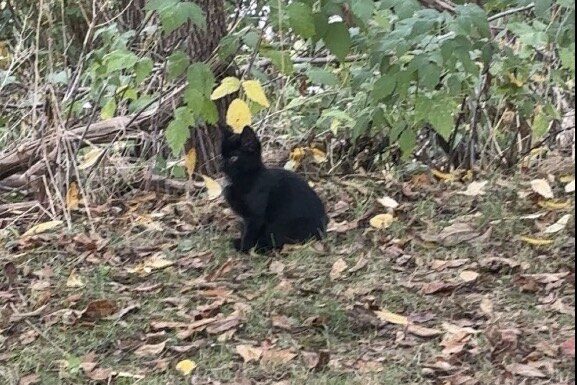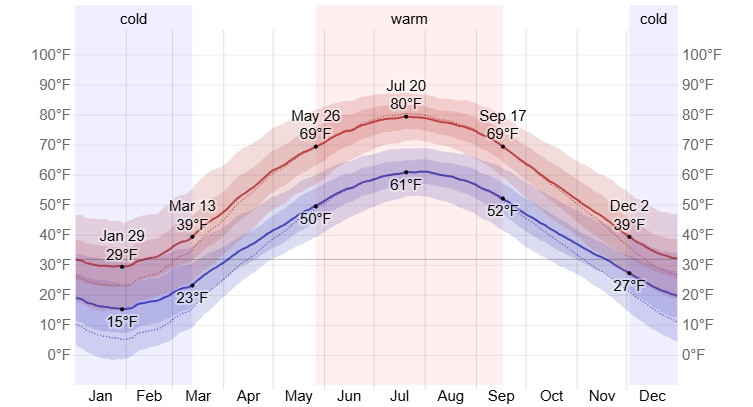The stray cat population in Cortland has grown throughout the years. This has caused a growing debate on what can be done as it is normal to see different cats wandering within Cortland.
Recently, numerous students have posted online asking for help to capture certain cats, or asking if anyone could take the cat they rescued off their hands because they can’t keep them due to campus dorm rules. Others have claimed seeing a considerably big population of kittens.

Of 159 SUNY Cortland students surveyed, 65% have seen a stray cat in Cortland and 17% have rescued one.
Residents of Cortland have also reported seeing an increase in stray cats within the area. A Facebook page called “Lost/Found Pets Cortland County NY”, shows reports of residents on strays they have seen and found.
The strays have been seen along Elm Street, River Street, Groton Ave and numerous blocks behind it, as well as numerous resident halls like Clark. However, the most concentrated area seems to be the area surrounding Groton Ave.
Among the reasons why these cats decided to stay, is the fact that there are numerous residents that leave out food for the cats. The meals come from a good place, but it can encourage overpopulation. Having a stable food source, increases cats ability to thrive to survive, reproduce, and grow the feral community further.
In addition to it, the cat community has few natural predators. With the increased human activity, predators such as coyotes, foxes, dogs, and big birds of prey like hawks, are more deterred from trying to prey on the feral cat community. Therefore, the cat population is not balanced by predation.
The feral colonies are also not fully neutered and spayed. The existence of unsterile cats and numerous kittens being born at a time contribute to the rising number of stray cats.
There has also been more mild winters in Cortland throughout the years. This can affect the stray community.

© WeatherSpark.com – The chart shows the average high and low temperature in Cortland from 2017 to 2025.
With more mild winters, more kittens are able to survive and reach adulthood. This adds to the population that is also to reproduce. In addition, the mild winters extend the breeding season for female cats. The cats also have an easier time accessing food, which helps them survive until the spring.
The Publics Encounters with Stray Cats
159 students at SUNY Cortland took a poll asking if they have seen a stray cat before in the area. They were also asked if they have rescued a stray in the area before. 64.78% of students (103/159) reported they have seen a stray. 16.98% of students (27/159) reported they have rescued a stray. Overall, two-thirds of students have reported seeing one in the area.
With more mild winters, more kittens are able to survive and reach adulthood. This adds to the population that is also to reproduce. In addition, the mild winters extend the breeding season for female cats and the cats have an easier time accessing food, which helps them survive until the spring.
Resources to Help
- Cortland County SPCA (879 Mclean Road)
The SPCA is a good resource to bring in strays. They offer low cost neuter and spay services. This allows the cats to find permanent homes and reduce the growing population of strays.
2. Central New York Spay Neuter Assistance Program (17 Salisbury Street)
They host clinics weekly on Monday for affordable vaccinations, spay and neuter services, and microchipping. They provide care for the feral cat colonies as well. Through their services and adoption programs, CNY SNAP tries to reduce the overpopulation of stray cats in SUNY Cortland.
The program also offers support Trap-Neuter-Return services for the colonies.
Solutions
Trap-Neuter-Return (TNR) services allow feral cats to be trapped, sterilized, vaccinated, and returned. This allows the stray cat population to slow down in growth and reduces the risk of spreading diseases. More than half of the colonies need to be sterilized to be effective. This will reduce the overpopulation if it’s consistently monitored, which will make supporting the colonies easier as well.
The community of Cortland also is essential to success. Volunteers and residents would do their part through providing the support needed to maintain the colonies. This will allow TNR services to become a long-term solution for controlling the population.
With consistency and community involvement, the stray colonies can be maintained for the better.